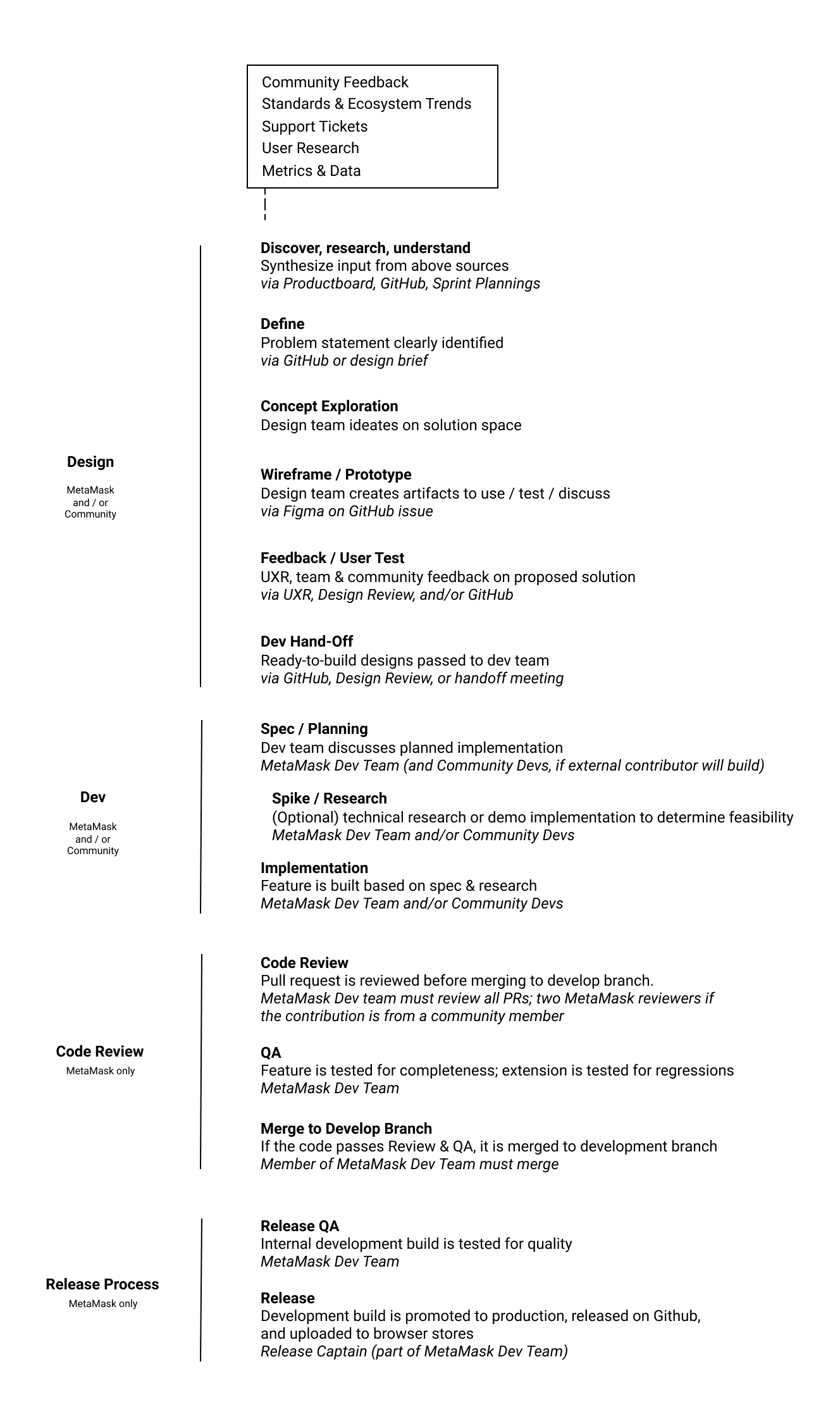When publishing a new version of Sparrow, we follow this procedure:
The below diagram outlines our process for design, development, and release. Building Sparrow is a community affair, and many steps of the process invite participation from external contributors as indicated. All QA, code review, and release of new versions is done by members of the core Sparrow team.
We try to ensure certain criteria are met before deploying:
- Deploy early in the week, to give time for emergency responses to unforeseen bugs.
- Deploy early in the day, for the same reason.
- Make sure at least one member of the support team is "on duty" to watch for new user issues coming through the support system.
- Roll out incrementally when possible, to a small number of users first, and gradually to more users.
Version can be automatically incremented by creating a branch with the name Version-vX.Y.Z, where X, Y, and Z are numbers. Branches should be created off of the main branch. Branches can be created on GitHub.
Once a version branch has been created, a build on CircleCI will create a Pull Request for the release with the app manifest and changelog versions bumped.
In the case that a new release has sensitive changes that cannot be fully verified prior to publication, please follow the sensitive release protocol.
While we develop on the main develop branch, our production version is maintained on the master branch.
With each pull request, the @MetaMaskBot will comment with a build of that new pull request, so after bumping the version on develop, open a pull request against master, and once the pull request is reviewed and merged, you can download those builds for publication.
- Publish to chrome store.
- Visit the chrome developer dashboard.
- Publish to firefox addon marketplace.
- Publish to Opera store.
- Post on Github releases page.
- Run the
yarn announcescript, and post that announcement in our public places.
Our develop branch is usually not yet fully tested for quality assurance, and so should be treated as if it is in an unstable state.
For this reason, when an urgent change is needed in production, its pull request should:
- Describe it as a hotfix.
- Use a hotfix tag.
- Should be proposed against the
masterbranch.
The version and changelog bump should then be made off the master branch, and then merged to develop to bring the two branches back into sync. Further time can be saved by incorporating the version/changelog bump into the PR against master, since we rely on @MetaMaskBot to run tests before merging.
